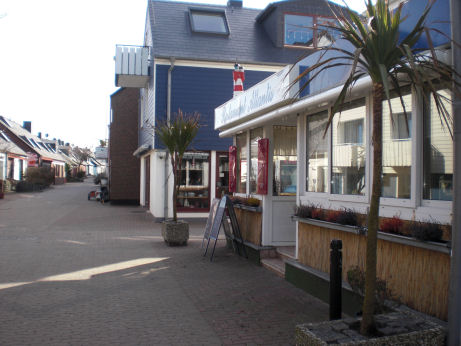
"Exotics" On Heligoland In Spring 2010
Also in the spring of 2010 we couldn't report about the "exotics" on the red island because of the lack of tempo and also weren't been there. Mr. Chris Stuehrk was disabled by vocational reasons and was moved to the Switzerland. Also I had to prepare new banana plantations in my new yard in Brazil and also had to complete one new edition of my banana book which should be valid worldwide and also be able to be translated into every language. One book about the "exotics" on Heligoland will be written soon.
That also in this year was one visite subsitutional made for us in late March 2010, is thank to one forum colleague Thomas from Schleswig/Germany from the forum Palmen & Co. Best thanks to him from us! Thomas was for 2 weeks on the red island because of his job. I also requested him in the forum to meet with Ulf Martens and to look after the "exotics" in the atriums of the James Kruess School and also to take photos from them. The visit also has brought us many new experiences! Unfortunately no further new pictures from the atriums of the school from the year 2009 could follow, but this was made by Thomas now.
The winter 2009/10 was very severe and long on the mainland of Germany, many "exotics" were killed on the German mainland. Also this time Heligoland was the winter mildest part of Germany as always. The lowest temperature of the past winter on Heligoland was 20°F (-6,6°C), this value was reached 2 times, otherwise there was continuous frost occured or values were only few degrees over 32°F (0°C) in the daytime, overnight the values went back to nearly 23°F (-5°C).
Also on Heligoland not all of the "exotics" survived, the winter was too severe on Heligoland too. Also the Aloe striatula in one of the atriums of the James Kruess School died after 6 years of successfully outdoor culture without any winter protection. Whether it did survive and come back, I still not know in the moment. At Cordyline australis there were surprises! The specimens on the Upper Land died and speciemens of the same species were survived in the lower town the severe winter unharmed! The trachies survived the past winter with leaf damages by salty sea winds and recover again on the Upper Lande as well as on the Lower Land.
Fatsia japonica, Euonymus japonica, Araucaria araucana, Camelia japonica, Yucca gloriosa, Yucca rostrata, Yucca flaccida, Yucca filiamentosa and also Yucca gloriosa 'Variegata' survived the past winter without problems. Surprisely Chamaerops humilis survived the past severe winter on Heligoland unharmed without any winter protection, even better than Trachycarpus fortunei and wagnerianus. Who asks about unharmed Chamerops humilis without winter protection in Germany in the severe winter, should go to Heligoland and check there! Also Pittosporum tobira on the plant island in the school yard of the James Kruess School has proven as completely hardy and sea salt wind resistant on Heligoland! Chamerops humilis, Phormium ternax, Yucca gloriosa, Yucca rostrata and Pittosporum tobira should be more often planted on the island in the Lower Town, in the Upper Town and in the Northeastern Area primarely in the gardens and the public green spaces, they are very recommendable.
The Washingtonia filifera at the power station is defoliated, but still live is shown in it. Whether it does regenerate now, I still don't know in the moment. I have to contact Ulf Martens again.
The Jubaea at the hotel 'Insulaner' is still alive and has survived with damages by sea salt wind on the feathery leaves without any winter protection, it is now in the 6th year of the outdoor culture. One further Jubaea chilensis is still planned at the power station, but the realization is one financial and temporal ask, in the reason the plants which are ready to plant out are not very cheap.
Only one right point in time has to result, when Chris Stührk, Wolfgang Ciossek and I will be on the island Heligoland again. But we are always thankful for reports from other exotic plant enthusiasts about the status of the "exotics" on the red island, because we have not always time to travel to the island.

Cordyline australis in pots have survived the severe winter 2009/10
in the Down Town on Heligoland well.
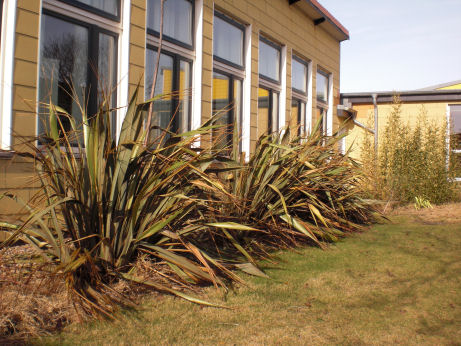
Phormium tenax nearly without damages after the severe Winter
2009/10 in one of the atriums of the James Kruess School.
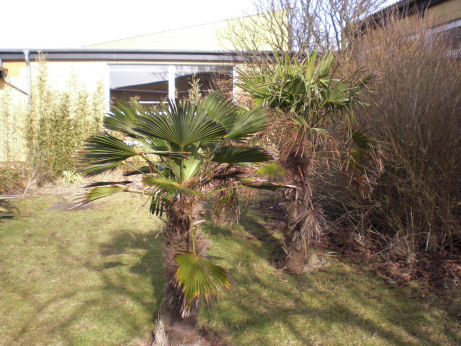
Trachycarpus wagnerianus in one atrium of the James Kruess School
after the winter 2009/10 nearly unharmed!
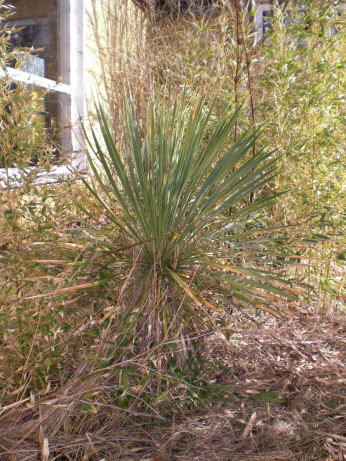
Yucca rostrata keeps very well and has one great
on the island!
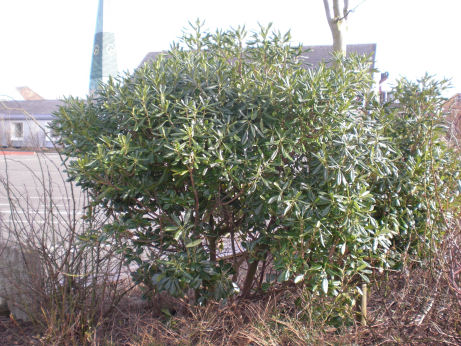
Pittosporum tobira on the plant island on the school yard of the James
Kruess School after the winter 2009/10, completely hardy on the island!
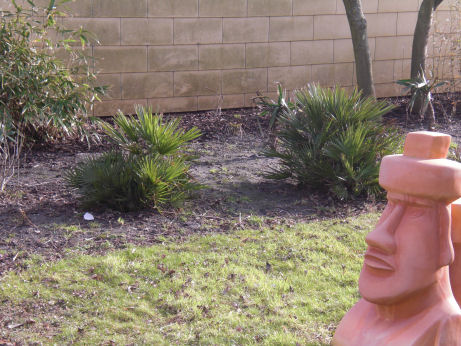
Also Chamaerops humilis has proven as completely hardy on the island!
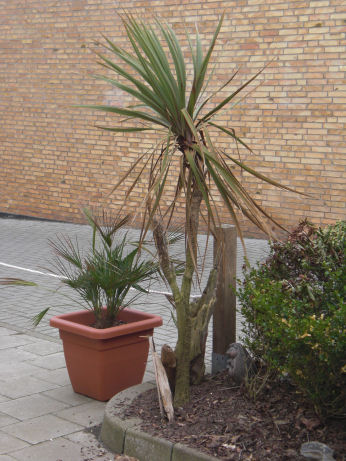
The Cordyline australis at the bistro "Sansibar" in the
Down Town took the winter well!
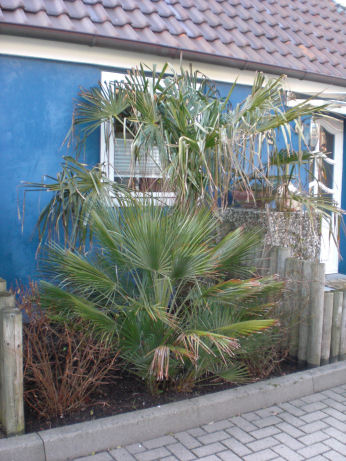
The Chamerops humilis in one front garden in the
Down Town has taken the winter better than the
neighboured Trachycarpus fortunei!
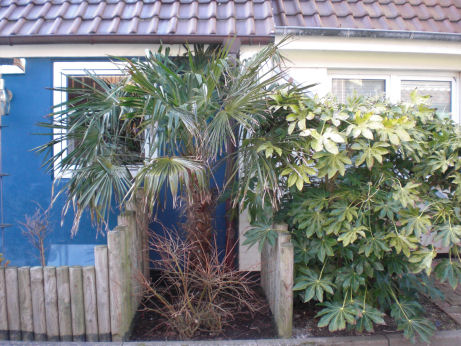
In one neighboured front garden in the Down Town the Trachycarpus
fortunei has taken the past winter some better, at the same one
Fatsia japonica.
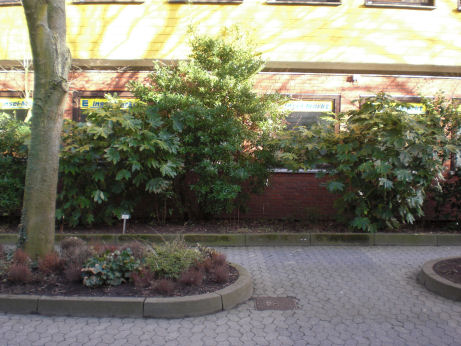
Also in the Down Down Fatsia japonica has proven as completely hardy!
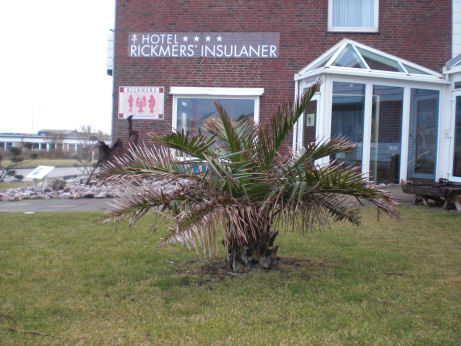
The Jubaea chilensis at the hotel "Insulaner" kept well despite of the
leaf damages by salty winds without any winter protection!
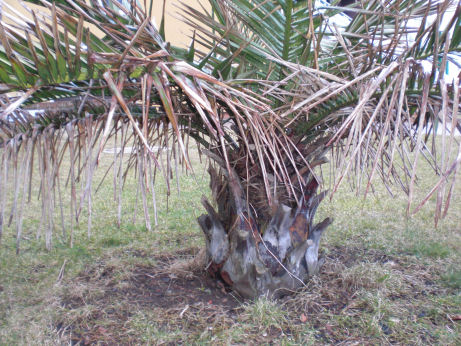
Even the trunk of Jubaea chilensis at the 'Insulaner' gained some extent!
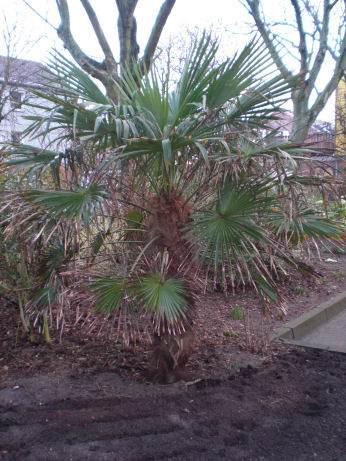
In one small windsheltered park in the Down Town
Trachycarpus fortunei kept well!
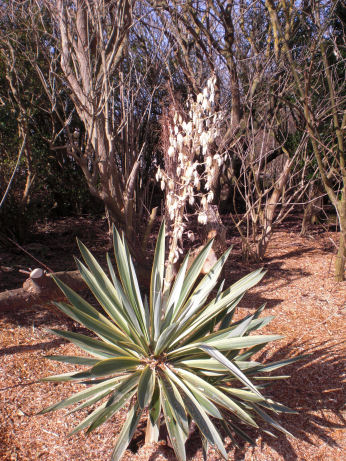
Yucca gloriosa 'Variegata' with later frozen inflorescene,
the plant kept well!
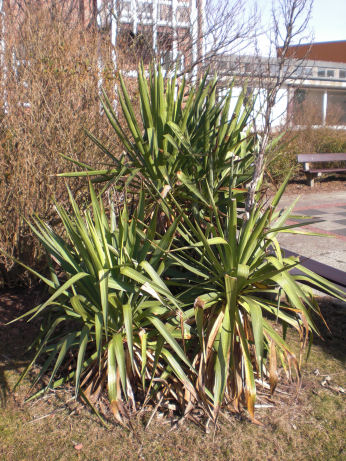
Also Yucca gloriosa has kept well in the miniature
golf area in the Northeastern Area, hopefully the
gardeners will not cut the plant back, it is now in
the full beauty!
Picture gallery "Exotics" in Spring 2010 (unfortunately only in German, please click on!)
Author: Joachim Jaeck
Created on August, 8th, 2010